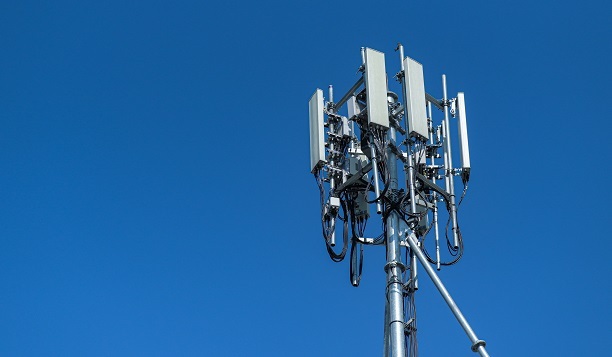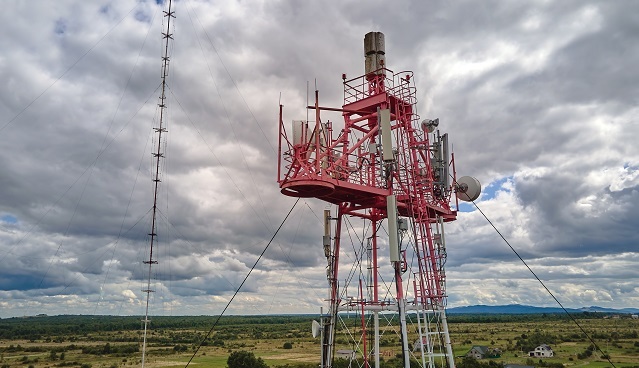
 Data Structure
Data Structure Networking
Networking RDBMS
RDBMS Operating System
Operating System Java
Java MS Excel
MS Excel iOS
iOS HTML
HTML CSS
CSS Android
Android Python
Python C Programming
C Programming C++
C++ C#
C# MongoDB
MongoDB MySQL
MySQL Javascript
Javascript PHP
PHP
- Selected Reading
- UPSC IAS Exams Notes
- Developer's Best Practices
- Questions and Answers
- Effective Resume Writing
- HR Interview Questions
- Computer Glossary
- Who is Who
What is the full form of DCF?
Introduction to DCF
In fibre optic communication systems, dispersion compensating fibre (DCF) is an optical fibre used to lessen the phenomena that result in signal distortion and spreading over long distances.

By using a fibre with a dispersion opposite to that of the transmission fibre, DCF is intended to account for chromatic dispersion, the most prevalent type of dispersion. It is applied to optical communication systems to boost bandwidth and range. DCF is a crucial component of high-speed communication networks, notably in long- and ultra-long-haul optical transmission systems.
DCF Working Principle
To take into account the dispersion that happens when optical signals are transported over long distances, a specialised optical fibre known as a Dispersion Compensating Fibre (DCF) is created. The spreading of optical pulses during their passage through an optical fibre is referred to as dispersion, and it can lead to distortion and a restriction on the quantity of data that can be sent.
Using DCF, a fibre with a high negative dispersion coefficient is used to counteract the positive dispersion of the transmission fibre. When light is transmitted through a DCF, a narrow and undistorted optical pulse is created because the negative dispersion of the DCF counterbalances the positive dispersion of the transmission fibre.
In single-mode and multimode fibre systems, DCF allows for the simultaneous compensation of chromatic dispersion (caused by the wavelength dependence of the refractive index) and polarisation mode dispersion (caused by the fibre's birefringence). When DCF is paired with other dispersion correction techniques, such as dispersion compensating modules, long-distance optical networks can perform better.
Applications of DCF
Dispersion compensating fibre (DCF), a kind of fibre optic cable, is used in long-distance communication networks to take optical data scattering into account. In high-speed data transmission systems used in cable television networks, internet services, and telephony, DCF is a crucial component.
Long-Distance Communication
To reduce optical signal dispersion in long-distance communication networks, DCF is utilised. High-speed data transmission over greater distances is made possible by its contribution to maintaining signal integrity and preventing data loss.
Optical Amplifier Systems
In optical amplifier systems, DCF is used to extend the transmission range and improve system functionality. It aids in lowering noise levels and signal distortion, improving signal quality.
Optical Time-Domain Reflectometry
DCF is used by optical time-domain reflectometers (OTDR) to measure the dispersion and loss of optical signals in fibre optic cables. It makes it easier to spot cable flaws and abnormalities and precisely pinpoint their locations.
Fibre-Optic Sensing
In fibre-optic sensing applications, DCF is used to quantify physical variables such as temperature, strain, and others. It is appropriate for structural health monitoring and other industrial applications because it gives precise and dependable data across greater distances.

Research and Development
When doing research and development, DCF is used to examine how optical signals behave in fibre optic connections. It aids in the creation of novel methods and tools for high-speed data transfer and other uses.
Coherent Optical Communication Systems
In coherent optical communication systems, DCF is used to account for the dispersion that results from using various light wavelengths. In addition to enabling larger data speeds over greater distances, it aids in maintaining signal quality.
Advantages and Disadvantages of DCF
Dispersion Compensating Fibre (DCF), a specially designed optical fibre, can be used to lessen the chromatic dispersion that occurs in high-speed optical communication networks. There are a number of benefits and drawbacks to DCF that need consideration.
Advantages
Improved Signal Quality
By adjusting for dispersion, DCF's main benefit is an improvement in signal quality. This makes it possible to send high-speed data over great distances since it assures that signals may travel farther without degrading.
Cost-Effective Solution
Compared to alternative dispersion compensation techniques, such as dispersion compensating modules or optical amplifiers, DCF is a more affordable way to correct for chromatic dispersion.
Compact Size
DCF is a common option for high-speed optical communication systems since it is small and simple to add to optical networks.
Disadvantages
Limited Range
The fact that DCF has a restricted scope of operations is one of its biggest flaws. This makes it unsuitable for long-haul communication systems since the range beyond which it can adjust for dispersion is constrained.
Polarisation-Dependent
DCF only operates successfully for one polarisation state since it is polarisation-dependent. Signal quality may suffer as a result of polarisation mode dispersion (PMD), which can be caused by this.
Installation Complexity
Because installing DCF may be a difficult procedure that calls for specialised tools and knowledge, it can raise the cost and complexity of the optical network.
Conclusion
Signal integrity in long-distance fibre optic transmission is crucially maintained by Dispersion Compensating Fibre (DCF). The chromatic dispersion effect that arises from the long-distance optical signal transmission is combated by DCF. It has been demonstrated to be a successful method for lowering signal distortion, enhancing signal quality, and expanding the range of optical networks. DCF is still a crucial technique for assuring dependable and superior fibre optic connection despite its flaws. In order to support the creation of next-generation optical communication networks, DCF will become more and more crucial as the need for high-speed data transmission rises.
FAQs
Q1. How does dispersion compensating fibre (DCF) differ from other types of optical fibres?
A. DCF differs from other types of optical fibres in its ability to compensate for signal dispersion. Other fibres, such as single-mode fibre for long-distance transmission or multimode fibre for short distances, are made for particular uses.
Q2. Can Dispersion Compensating Fibre be spliced into other types of fibre?
A. Yes, Dispersion Compensating Fibre can be spliced into other types of fibre using standard fusion splicing techniques. However, it is important to ensure that the splice loss is minimised to maintain signal quality.
Q3. Can long-distance transmission systems take advantage of dispersion-compensating fibre?
A. Yes, long-distance transmission systems may employ Dispersion Compensating Fibre. In fact, it is often used in conjunction with standard single-mode fibre to compensate

